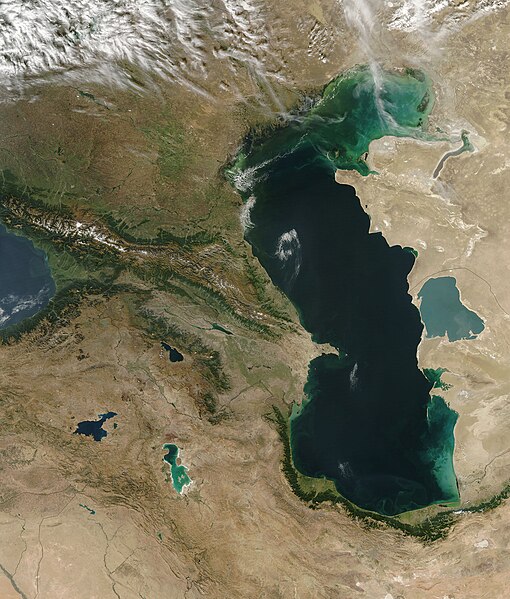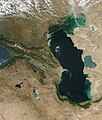Archivo:Satellite image of the Caucasus-Caspian Region.jpg

Tamaño de esta previsualización: 510 × 599 píxeles. Otras resoluciones: 204 × 240 píxeles · 409 × 480 píxeles · 654 × 768 píxeles · 872 × 1024 píxeles · 1703 × 2000 píxeles.
Ver la imagen en su resolución original (1703 × 2000 píxeles; tamaño de archivo: 1,29 MB; tipo MIME: image/jpeg)
Historial del archivo
Haz clic sobre una fecha y hora para ver el archivo tal como apareció en ese momento.
| Fecha y hora | Miniatura | Dimensiones | Usuario | Comentario | |
|---|---|---|---|---|---|
| actual | 05:44 26 oct 2005 |  | 1703 × 2000 (1,29 MB) | Brian0918 | Caspian Sea and Georgia Sometimes referred to as the Caucasus Isthmus, the Caucasus-Caspian Region is a mixing-pot for scores of cultures. Due in part to its geographic isolation and having been in the path of numerous Eurasian migrations over the cent |
Usos del archivo
No hay páginas que enlacen a este archivo.
Uso global del archivo
Las wikis siguientes utilizan este archivo:
- Uso en ar.wikipedia.org
- Uso en ast.wikipedia.org
- Uso en bg.wikipedia.org
- Uso en en.wikipedia.org
- Uso en fr.wikipedia.org
- Uso en fr.wiktionary.org
- Uso en gcr.wikipedia.org
- Uso en ky.wikipedia.org
- Uso en mg.wikipedia.org
- Uso en nn.wikipedia.org
- Uso en no.wikipedia.org
- Uso en oc.wikipedia.org
- Uso en pt.wikibooks.org
- Uso en sq.wikipedia.org


